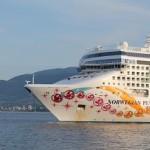The Port of Vancouver is home to 29 major marine terminals that service five business sectors:
Automobiles |
The port handles approximately 400,000 vehicles annually, making the Port of Vancouver one of the top three ports on the west coast of North America for vehicle transshipment. Learn more about automobiles. |  |
Breakbulk and project cargo |
The Port of Vancouver is the major consolidation centre on Canada’s west coast for breakbulk cargo such as forest products, steel and machinery. Learn more about breakbulk and project cargo. |  |
Bulk |
Dry and liquid bulk cargoes account for approximately two-thirds of the port’s annual tonnage. Shipping lines regularly call on the port because of the availability of diverse western Canadian commodities for export. Learn more about bulk. |  |
Container |
The port offers four common-user container terminals with extensive on-dock rail facilities. In 2013, container cargo accounted for approximately 20 per cent of the port’s annual tonnage throughput. Learn more about container. |  |
Cruise |
As the homeport for the Vancouver-Alaska cruise industry, the Port of Vancouver welcomes hundreds of thousands of passengers annually. Learn more about cruise. |  |
To view terminal locations, view our interactive map.
For information on supply chain performance measures and real-time monitoring, visit our Port Dashboard.
